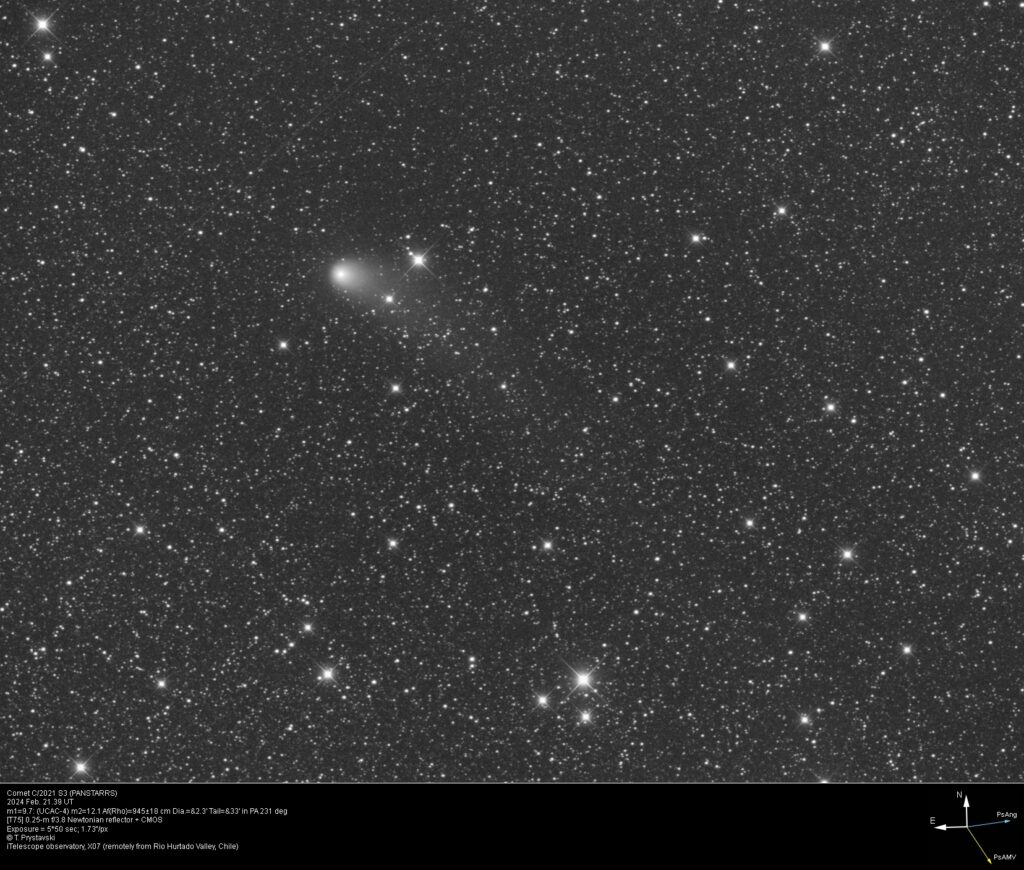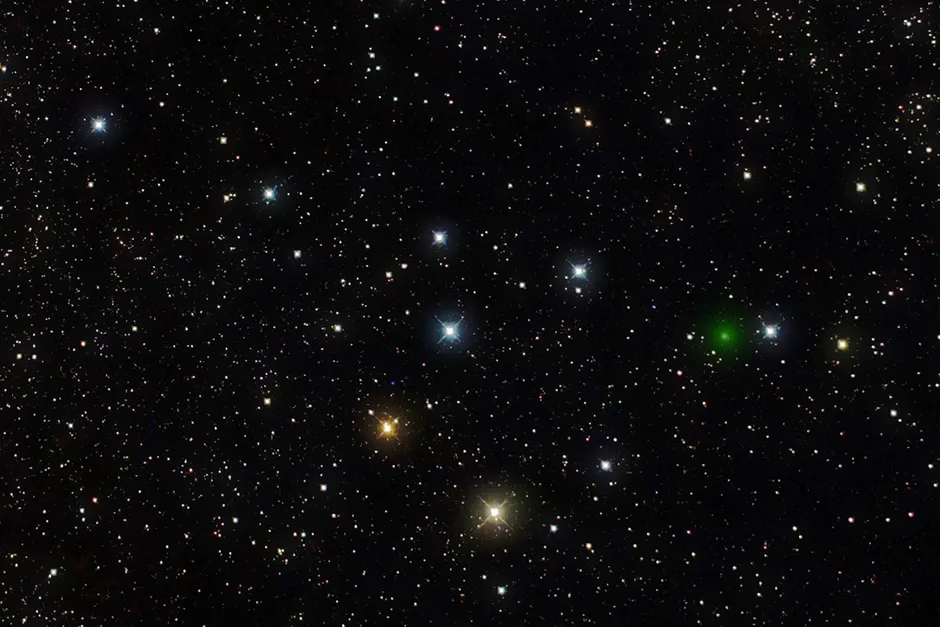Astronomers still can’t determine how bright the comet C/2023 A3 (Tsuchinshan-ATLAS) will be in the fall, although most of them believe that it will be clearly visible to the naked eye. Instead, we already have the first “disappointment of the year” — comet C/2021 S3 (PanSTARRS), instead of reaching the seventh magnitude and becoming an easy object for small telescopes, “did not reach” even the 9th. Now it is slowly moving in the eastern part of the Serpens constellation towards the Aquila’s tail, rising quite high above the horizon by the beginning of morning twilight. The conditions for observing it in our latitudes are gradually improving.
The comet’s apparent brilliance is determined by its distance from the Sun and the Earth. But if the latter is subject to the simple law of the inverse square (the flux of energy from a source per unit area is inversely proportional to the square of the distance to it), our luminary affects the “tail stars” in a very peculiar way. It not only illuminates them more strongly when approaching them, but also heats them up, causing increased evaporation of volatile substances in cometary nuclei and the release of gases. Therefore, in general, the brightness of comets is inversely proportional not to the square of the heliocentric distance, but to the fourth power. But this is not always the case.
The fact is that when cometary matter is heated, not only the volatile component evaporates. It also contains a certain amount of silicates (roughly speaking, sand) and high-molecular-weight organics. If there are too many of them, they gradually form a crust on the surface of the comet’s nucleus, which, firstly, protects the deeper layers from heating, and secondly, slows down the release of gaseous substances.

Most often, such a crust is found on the surface of the nuclei of short-period comets that have approached the Sun many times. But even once is sometimes enough. Something similar happened to comet C/2021 S3. Now its orbit has an eccentricity of more than one, which means that moving along it, the object will leave the Solar System forever. However, according to many signs, this comet has already been near our luminary, and the surface of its nucleus has been significantly affected by it. Therefore, the degree in the formula for the dependence of brightness on heliocentric distance should no longer be -4, but approximately -2.5. Consequently, its maximum brightness was observed not in early March, as previous calculations claimed, but about a week later – closer to the comet’s passage near the Earth at a distance of 1,298 AU (194 million km), which will occur on March 15.
On March 29-30, the PanSTARRS comet will be among the stars of the Collinder 399 scattered cluster in the Vulpecula constellation. Unfortunately, the Moon will interfere with its observations at this time, but a telescope with a lens diameter of more than 15 cm should be enough to see it.

As a reminder, the brightest “tailed star” in the Earth’s sky is the comet Pons-Brooks (12P/Pons-Brooks), which, under very clear and dark skies, can already be seen with the naked eye.

